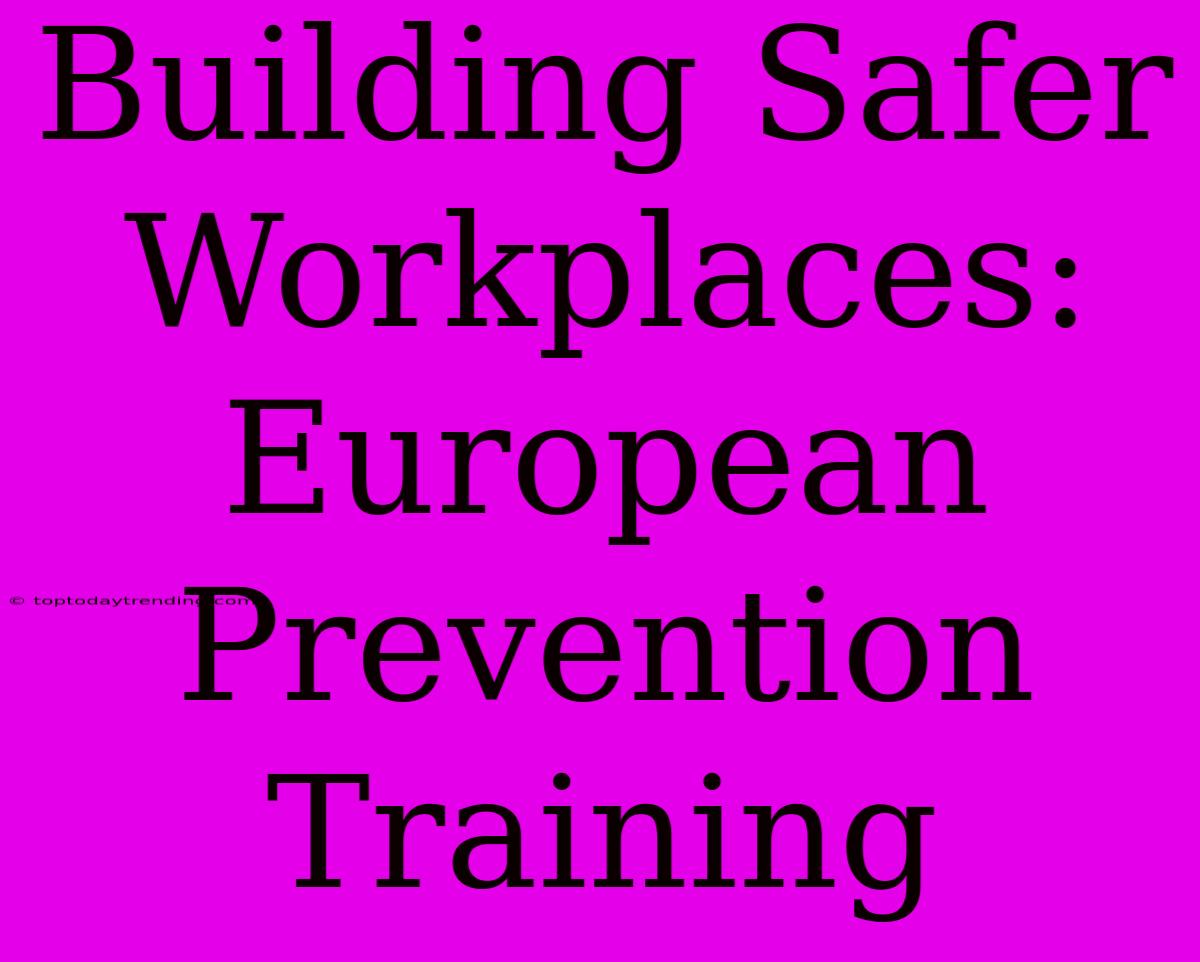Building Safer Workplaces: European Prevention Training
Introduction:
Workplace safety is paramount, and it's a shared responsibility among employers, employees, and governments. The European Union (EU) has established a comprehensive framework for workplace safety and health, and a key element of this framework is European Prevention Training. This program aims to empower workers and employers with the knowledge and skills needed to prevent accidents and illnesses in the workplace, fostering a culture of safety and health across all sectors.
The Importance of European Prevention Training:
1. Reducing Accidents and Illnesses:
- Statistical Evidence: The EU reports that workplace accidents and illnesses cost the EU economy billions of euros annually. This includes direct costs like medical expenses and lost productivity, as well as indirect costs like legal fees and insurance premiums.
- Impact on Individuals: Workplace accidents and illnesses can have devastating consequences for individuals and their families, leading to pain, suffering, disability, and even death.
- Preventing Accidents and Illnesses: European Prevention Training equips workers and employers with the tools and knowledge to identify and manage workplace risks, reducing the likelihood of accidents and illnesses.
2. Promoting a Culture of Safety:
- Positive Workplace Environment: A culture of safety emphasizes the importance of everyone taking responsibility for their own safety and the safety of others.
- Employee Empowerment: European Prevention Training empowers employees to actively participate in workplace safety initiatives, enabling them to identify potential hazards and raise concerns.
- Continuous Improvement: Training programs foster a culture of continuous learning and improvement, encouraging the identification and implementation of new safety measures.
3. Meeting Legal Requirements:
- EU Directives: The EU has set several directives on workplace safety and health, and European Prevention Training plays a crucial role in meeting these requirements.
- Employer Responsibility: Employers are legally obligated to provide their employees with adequate safety training, and European Prevention Training programs are recognized as meeting these obligations.
- Compliance and Enforcement: The EU has established mechanisms for monitoring compliance with these directives, with potential penalties for employers who fail to provide appropriate training.
What Does European Prevention Training Involve?
- Tailored Training: European Prevention Training programs are tailored to specific sectors and workplaces, addressing the unique risks and challenges of each industry.
- Practical Skills and Knowledge: Training covers a wide range of topics, including hazard identification, risk assessment, personal protective equipment, emergency procedures, and safe work practices.
- Hands-on Experience: Training programs often include hands-on activities and simulations to provide participants with practical experience and reinforce their learning.
- Continuing Education: European Prevention Training emphasizes continuous learning, with opportunities for refresher courses and advanced training to keep workers up-to-date on the latest safety practices.
Benefits of European Prevention Training:
- Reduced Workplace Accidents and Illnesses: The most significant benefit is a reduction in accidents and illnesses, leading to a safer and healthier working environment.
- Improved Employee Morale and Productivity: Employees who feel safe and valued are more likely to be engaged and productive.
- Enhanced Reputation and Competitiveness: A strong commitment to workplace safety can enhance a company's reputation and attract talent.
- Legal Compliance and Reduced Costs: Meeting legal requirements and reducing workplace accidents and illnesses translates to significant cost savings.
Conclusion:
European Prevention Training is an essential tool for building safer workplaces across the EU. By empowering workers and employers with the knowledge and skills they need to prevent accidents and illnesses, these programs foster a culture of safety and health, ultimately contributing to a more sustainable and thriving European workforce.

